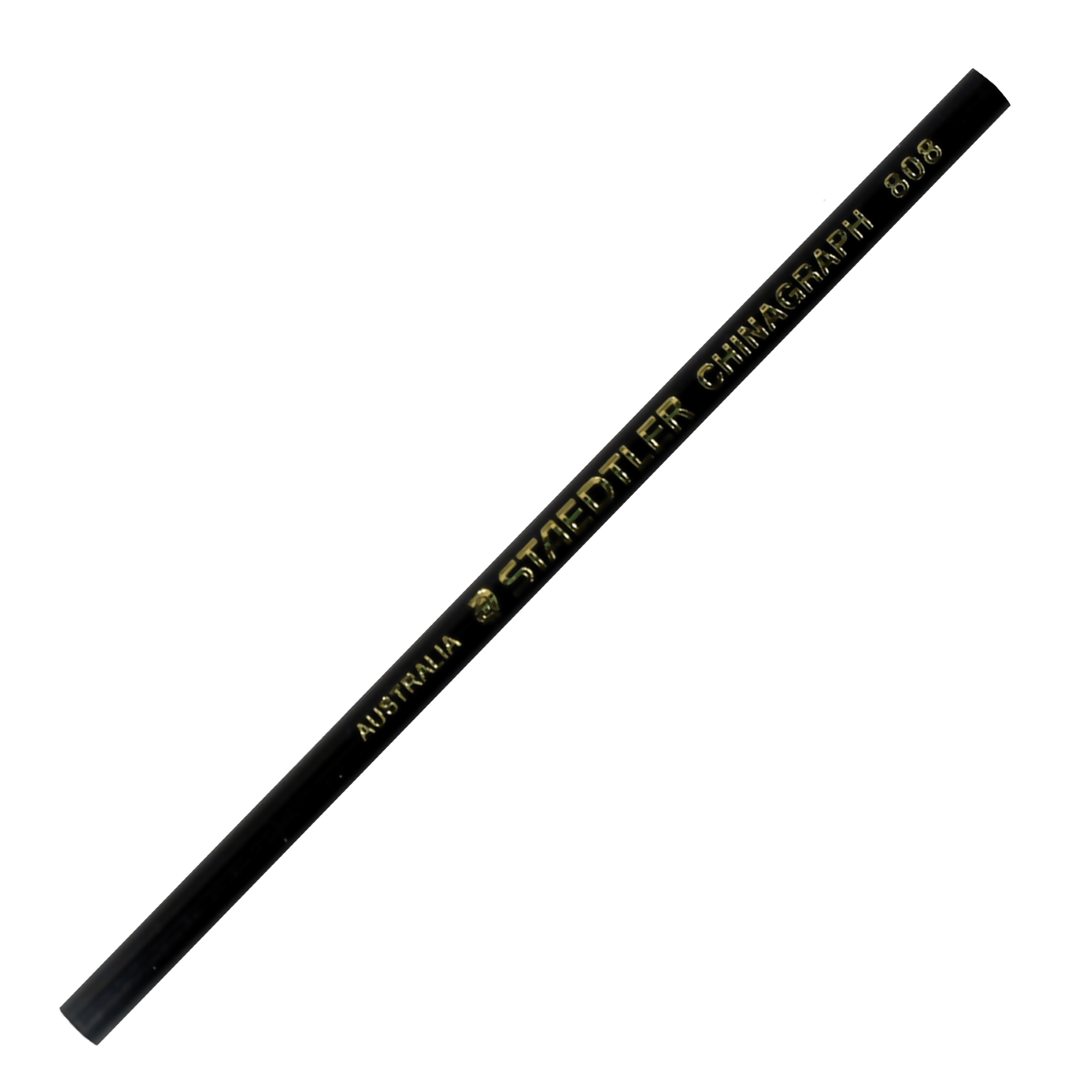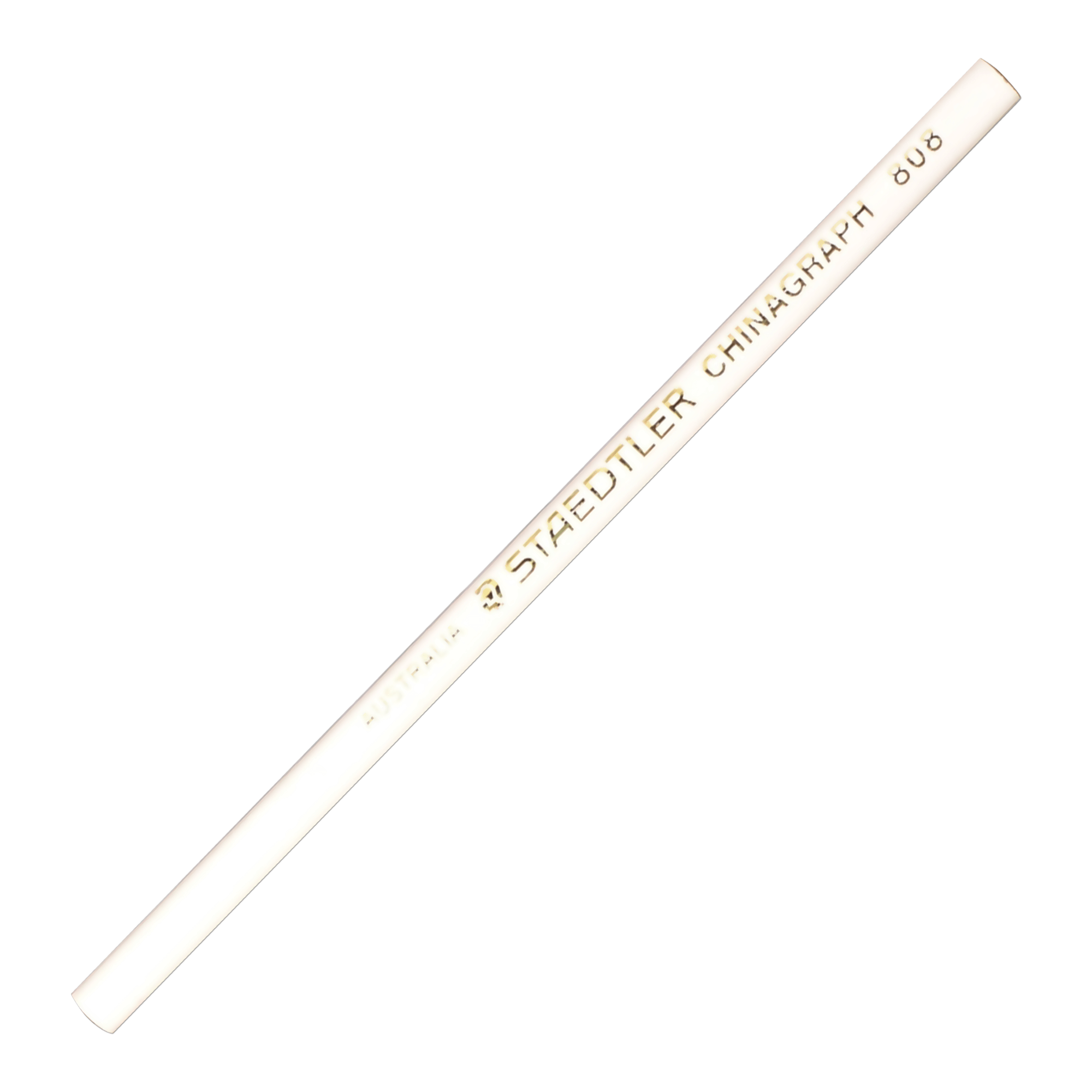Description
THIS PRODUCT: Wax pencils for marking on glossy or other surfaces EG: glass, leather, textiles, stone, metal, wood and plastic, Permanent, Waterproof. Colours black or white.
IN GENERAL: A chinagraph pencil, also known as a grease pencil or wax pencil, is a unique type of writing and marking instrument that uses a waxy or grease-based core. It is primarily designed for making temporary, waterproof, and highly visible markings on a variety of surfaces. Here’s a brief description of a chinagraph pencil and some common uses:
- Core: The core of a chinagraph pencil is made of a waxy or grease-based material. This core is resistant to water and can adhere to a wide range of surfaces, including glass, plastic, metal, wood, and paper.
- Encasing: The core is encased in a wooden or plastic barrel, similar in appearance to a regular pencil. The barrel typically features a peel-away paper or plastic wrapping to expose the core as it wears down.
- Sharpening: Chinagraph pencils can be sharpened to maintain a fine point or edge using a sharpener specifically designed for wax-based pencils.
Common Uses:
- Glass Marking: Chinagraph pencils are frequently used for marking glass surfaces, such as windows and mirrors. The waxy nature of the core allows for temporary messages, signs, or diagrams to be drawn on glass, which can later be easily wiped off with a damp cloth.
- Photography and Film Production: In photography and film production, chinagraph pencils are used to mark and label film canisters, camera lenses, and photographic equipment. The marks are waterproof and can be removed with a soft cloth or tissue.
- Industrial Marking: In industrial settings, chinagraph pencils are used to mark metal, plastic, and other materials. They are particularly useful for temporary part numbering, defect identification, or layout markings on workpieces and machinery.
- Drafting and Technical Drawing: Drafters and engineers use chinagraph pencils for marking and highlighting technical drawings, blueprints, and architectural plans. The marks are easy to see and won’t smudge.
- Woodworking and Carpentry: Chinagraph pencils are employed in woodworking and carpentry to mark cut lines and measurements on wood surfaces. The marks are resistant to sawdust and moisture.
- Scuba Diving: Scuba divers use chinagraph pencils to write on underwater slates or dive logs. The marks remain legible when submerged in water.
- Art and Crafts: Artists and crafters use chinagraph pencils for various artistic projects, such as creating temporary sketches, layout guides, or embellishments on different surfaces.
- Fishing and Outdoor Activities: Anglers use chinagraph pencils to mark fishing lines and adjust tackle setups. Outdoor enthusiasts may use them for marking maps and navigation tools.
- Aviation: In aviation, chinagraph pencils are used for temporary markings on aircraft surfaces, charts, and navigation instruments.
Chinagraph pencils are valued for their versatility and the ability to make waterproof and temporary markings on various surfaces. They are particularly useful when a non-permanent mark is needed, as they can be easily removed without leaving a lasting trace.



